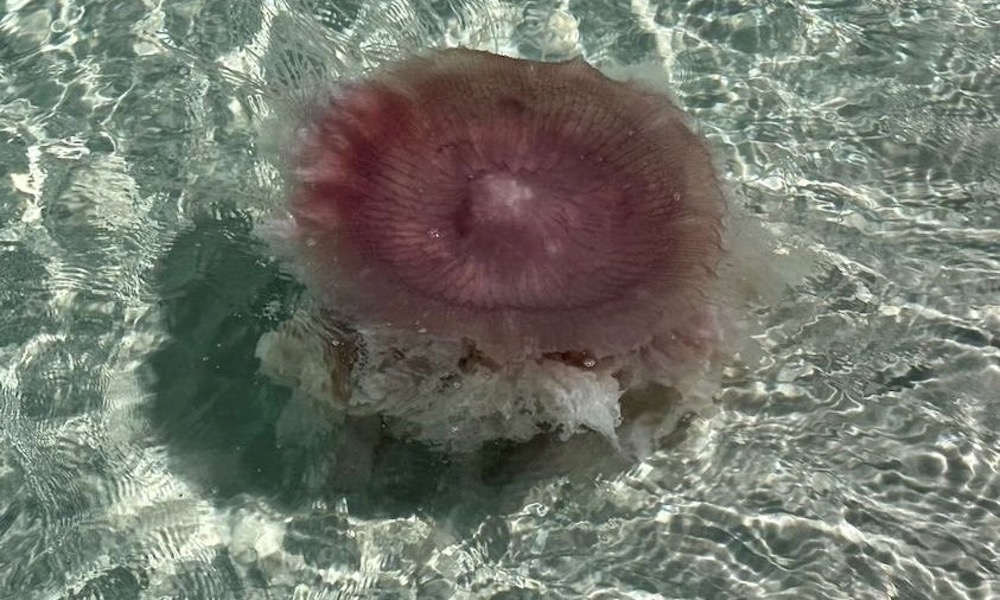Beachgoers on Florida’s Emerald Coast are being warned not to enter the water because of an influx of jellyfish, which in turn has attracted an abundance of rare pink meanies.
Purple flags, which inform the public that dangerous marine life has been spotted, have flown for 46 straight days, and more than 100 jellyfish stings have been reported in the past 40 days, though many more likely have gone unreported, according to WEAR-TV.
WEAR News' @JNeubauerWx breaks down why purple flags are being flown across Northwest Florida beaches. — https://t.co/78g25JGpRR pic.twitter.com/8JROxvky1N
— WEAR ABC 3 (@weartv) October 6, 2022
The giant pink jellyfish, with some tentacles as long as 70 feet, first turned up in the Gulf of Mexico in 2000, and scientists then believed it was native to the Mediterranean. But in 2011, scientists determined the Gulf version was an entirely new species, as reported by AL.com.
Also on FTW Outdoors: ‘Blockhead’ who posed for photo with wild horse is kicked…and cited
The species is so named because it truly is a meanie, attacking and feeding on other jellyfish, like the moon jellyfish, sometimes eating 34 at a time. Narcity.com reported they are “pretty scarce to come by in the Gulf waters.”


“The jellyfish species is considered generally not dangerous to humans, but if you get stung it will likely be painful,” WEAR-TV stated.
https://www.instagram.com/p/CjVZzX2rzLv/
Pink meanies are one of the most rare jellyfish species and are usually found when blooms of jellyfish are abundant, wrote Dimensions.com, adding that they weigh between 30 to 50 pounds, with a bell width of 30-36 inches and a bell height of 22-27.2 inches.
Photos courtesy of South Walton Fire District.
[listicle id=1969738]







